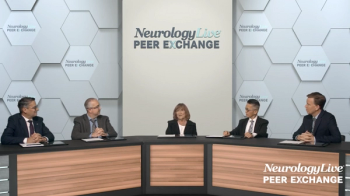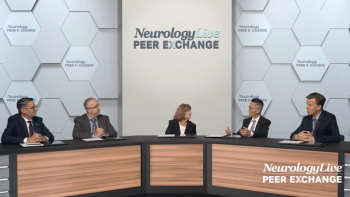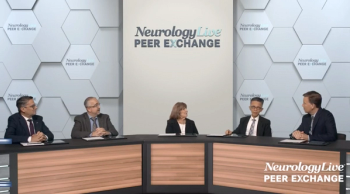
Data from the CLARITY extension trial suggest that the durability of treatment with cladribine extended beyond 24 months in those with relapsing-remitting multiple sclerosis.

Data from the CLARITY extension trial suggest that the durability of treatment with cladribine extended beyond 24 months in those with relapsing-remitting multiple sclerosis.

Neurology News Network for the week ending February 29, 2020.

The president and founder of Cure Rare Disease discussed the company’s custom therapeutics for patients with rare diseases, including the use of CRISPR gene-editing technology to develop treatments for Duchenne muscular dystrophy.

Recovery status may be a useful tool to predict long-term outcomes in patients with relapsing forms of multiple sclerosis.

Take 5 minutes to catch up on NeurologyLive's highlights from the week ending February 28, 2020.

Leaders of the CMSC Working Group on MRI protocols and clinical guidelines express the need for a unified approach to diagnosing and monitoring multiple sclerosis.

The investigational MS therapy is currently under review with the FDA, with a PDUFA date set for June 2020.

The neurologist at Cleveland Clinic’s Lou Ruvo Center for Brain Health spoke to the need for data on the proper sequencing strategies for patients with MS who are switching disease-modifying therapies.

Rimegepant, the only orally disintegrating anti-CGRP tablet, marketed as Nurtec ODT, will be available in a 75-mg dose.

Compared with patients who initially received interferon treatment, those given ocrelizumab had superior disability progression after a 6-year follow-up.

Patients with a disease duration of <16 years demonstrated a significantly greater reduction in risk for confirmed disability progression (CDP) at 3 and 6 months.

The new PDUFA action date has been set as June 25, 2020, a 3-month extension. The FDA informed Zogenix that additional data submission has constituted a major amendment to the NDA.

Understanding the pathophysiology of myasthenia gravis is still being determined to this day, but the neonatal Fc receptor is emerging as a potential treatment.
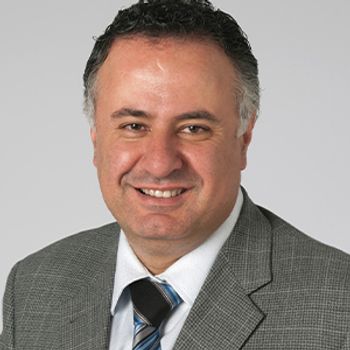
Imad Najm, MD, director of the Cleveland Clinic Epilepsy Center, detailed the ongoing efforts to transform the way health care providers diagnose and treat patients with 1 ultimate goal in mind: improving access to high-quality care.

The orally administered tyrosine kinase inhibitor was shown to delay disability progression in patients with primary progressive multiple sclerosis.
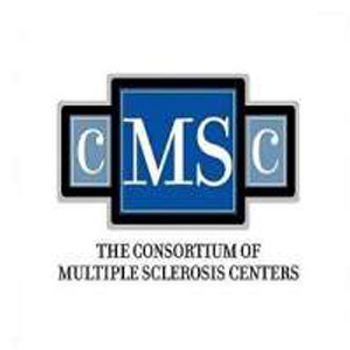
The multi-part series features a panel of 5 distiguished experts, discussing topics related to the updates to MRI and guidelines for multiple sclerosis treatment.
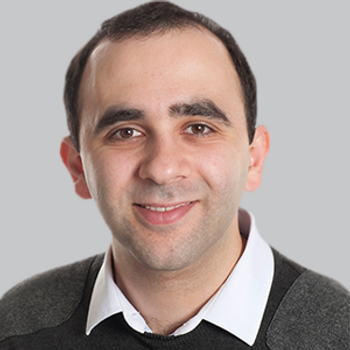
Phase 2 STOP-AUST data suggest that the antifibrinolytic agent may be able to reduce ICH in spot sign positive patients with stroke when administered within 2 to 3 hours of onset, warranting further study.

The Healey ALS Platform Trial learns from successful cancer drug studies to identify and accelerate new treatments for the devastating disease.

The executive director of clinical research at Sunovion spoke about the key takeaways from a phase 3 trial of self-administered apomorphine sublingual film in Parkinson disease.

Based on current evidence, the Task Force was unable to recommend cognitive screening for older adults despite a recent push by the AAN to screen all adults 65 and older for thinking and memory problems.

New study data from ISC 2020 suggest that patients with stroke can be effectively treated with tenecteplase at a lower dose of 0.25 mg/kg, reducing the need for mechanical clot removal.

Two new classes of medications have quickly expanded the pool of available treatment options for patients with migraine, who now have more power than ever to choose the treatment that fits them best.

The VMAT2 inhibitor failed to meet the primary end point in the ARTISTS 1 and ARTISTS 2 trials in the treatment of tics in pediatric patients with Tourette syndrome.

Stroke patients experienced higher rates of thrombolysis as well as faster alarm to treatment times when mobile stroke units were present.

The novel B-cell therapy has been assigned a PDUFA date of June 2020.

The composite primary end point of the study occurred in 9.6% of patients in the lower-target LDL-C group compared with 12.9% in the higher target group.

Retrotope had already received FDA approval to test RT001, a chemically modified polyunsaturated fatty acid agent, in expanded access trials of 3 patients with progressive supranuclear palsy.
